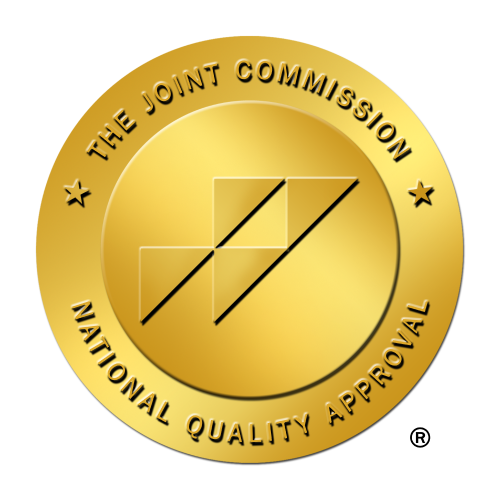Alcohol Addiction & Symptoms
At A Better Path Treatment Programs, we offer individualized treatment plans for alcohol use disorder that incorporate evidence-based practices and a holistic approach to support our clients' sustainable recovery. We understand that recovery is a journey unique to each individual, and we are dedicated to providing the highest level of care in a compassionate and welcoming environment. If you or a loved one is struggling with alcohol use disorder, please don't hesitate to reach out to us for help.
Alcohol Addiction
Alcohol addiction - Alcohol use disorder is a pattern of alcohol use that involves problems controlling your drinking, being preoccupied with alcohol, or continuing to use alcohol even when it causes problems. This disorder also involves having to drink more to get the same effect or having withdrawal symptoms when you rapidly decrease or stop drinking. Alcohol use disorder includes a level of drinking that's sometimes-called alcoholism. A person with alcoholism is not just when a person occasionally misuses alcohol, wine, liquor, or beer. People occasionally overindulge, however if the use of alcohol causes consequences beyond a once-a-year celebration headache, you might need help.
Alcohol use disorder is a pattern of alcohol use that involves problems controlling your drinking, being preoccupied with alcohol, or continuing to use alcohol even when it causes problems. This disorder also involves having to drink more to get the same effect or having withdrawal symptoms when you rapidly decrease or stop drinking. Alcohol use disorder includes a level of drinking that's sometimes-called alcoholism.
Alcohol Addiction & Symptoms
Alcohol use disorders can be mild, moderate, or severe, based on the number of symptoms you experience. Signs and symptoms may include:
- Being unable to limit the amount of alcohol you drink
- Wanting to cut down on how much you drink or making unsuccessful attempts to do so
- Spending a lot of time drinking, getting alcohol or recovering from alcohol use
- Feeling a strong craving or urge to drink alcohol
- Failing to fulfill major obligations at work, school or home due to repeated alcohol use
- Continuing to drink alcohol even though you know it's causing physical, social, work or relationship problems
- Giving up or reducing social and work activities and hobbies to use alcohol
- Using alcohol in situations where it's not safe, such as when driving or swimming
- Developing a tolerance to alcohol so you need more to feel its effect or you have a reduced effect from the same amount
- Experiencing withdrawal symptoms — such as nausea, sweating and shaking — when you don't drink, or drinking to avoid these symptoms
Alcohol use disorder can include periods of being drunk (alcohol intoxication) and symptoms of withdrawal.
Alcohol intoxication results as the amount of alcohol in your bloodstream increases. The higher the blood alcohol concentration is, the more likely you are to have bad effects. Alcohol intoxication causes behavior problems and mental changes. These may include inappropriate behavior, unstable moods, poor judgment, slurred speech, problems with attention or memory, and poor coordination. You can also have periods called "blackouts," where you don't remember events. Very high blood alcohol levels can lead to coma, permanent brain damage or even death.
Alcohol withdrawal can occur when alcohol use has been heavy and prolonged and is then stopped or greatly reduced. It can occur within several hours to 4 to 5 days later. Signs and symptoms include sweating, rapid heartbeat, hand tremors, problems sleeping, nausea and vomiting, hallucinations, restlessness and agitation, anxiety, and occasionally seizures. Symptoms can be severe enough to impair your ability to function at work or in social situations.
What is considered 1 drink?
The National Institute on Alcohol Abuse and Alcoholism defines one standard drink as any one of these:
- 12 ounces (355 milliliters) of regular beer (about 5% alcohol)
- 8 to 9 ounces (237 to 266 milliliters) of malt liquor (about 7% alcohol)
- 5 ounces (148 milliliters) of wine (about 12% alcohol)
- 1.5 ounces (44 milliliters) of hard liquor or distilled spirits (about 40% alcohol)
Impact on your health
Drinking too much alcohol on a single occasion or over time can cause health problems, including:
- Liver disease - Heavy drinking can cause increased fat in the liver (hepatic steatosis) and inflammation of the liver (alcoholic hepatitis). Over time, heavy drinking can cause irreversible destruction and scarring of liver tissue (cirrhosis).
- Digestive problems - Heavy drinking can result in inflammation of the stomach lining (gastritis), as well as stomach and esophageal ulcers. It can also interfere with your body's ability to get enough B vitamins and other nutrients. Heavy drinking can damage your pancreas or lead to inflammation of the pancreas (pancreatitis).
- Heart problems - Excessive drinking can lead to high blood pressure and increases your risk of an enlarged heart, heart failure or stroke. Even a single binge can cause serious irregular heartbeats (arrhythmia) called atrial fibrillation.
- Diabetes complications - Alcohol interferes with the release of glucose from your liver and can increase the risk of low blood sugar (hypoglycemia). This is dangerous if you have diabetes and are already taking insulin or some other diabetes medications to lower your blood sugar level.
- Issues with sexual function and periods - Heavy drinking can cause men to have difficulty maintaining an erection (erectile dysfunction). In women, heavy drinking can interrupt menstrual periods.
- Eye problems - Over time, heavy drinking can cause involuntary rapid eye movement (nystagmus) as well as weakness and paralysis of your eye muscles due to a deficiency of vitamin B-1 (thiamin). A thiamin deficiency can result in other brain changes, such as irreversible dementia, if not promptly treated.
- Birth defects - Alcohol use during pregnancy may cause miscarriage. It may also cause fetal alcohol spectrum disorders (FASDs). FASDs can cause a child to be born with physical and developmental problems that last a lifetime.
- Bone damage - Alcohol may interfere with making new bone. Bone loss can lead to thinning bones (osteoporosis) and an increased risk of fractures. Alcohol can also damage bone marrow, which makes blood cells. This can cause a low platelet count, which may result in bruising and bleeding.
- Neurological complications - Excessive drinking can affect your nervous system, causing numbness and pain in your hands and feet, disordered thinking, dementia, and short-term memory loss.
- Weakened immune system - Excessive alcohol use can make it harder for your body to resist disease, increasing your risk of various illnesses, especially pneumonia.
- Increased risk of cancer - Long-term, excessive alcohol use has been linked to a higher risk of many cancers, including mouth, throat, liver, esophagus, colon and breast cancers. Even moderate drinking can increase the risk of breast cancer.
- Medication and alcohol interactions - Some medications interact with alcohol, increasing its toxic effects. Drinking while taking these medications can either increase or decrease their effectiveness or make them dangerous.
Licensed and Certified by the Department of Health Care Services
A Better Path Treatment Programs accept most employer-provided PPO insurance, including all major companies. We provide pricing packages to those who prefer to avoid using insurance. Currently, we cannot accept State, County, or Kaiser insurance. To inquire about our pricing packages or for more information about our services, please complete the information form; one of our Admissions team members will contact you shortly.
License: 310037AP
Expiration: 02/28/2025





